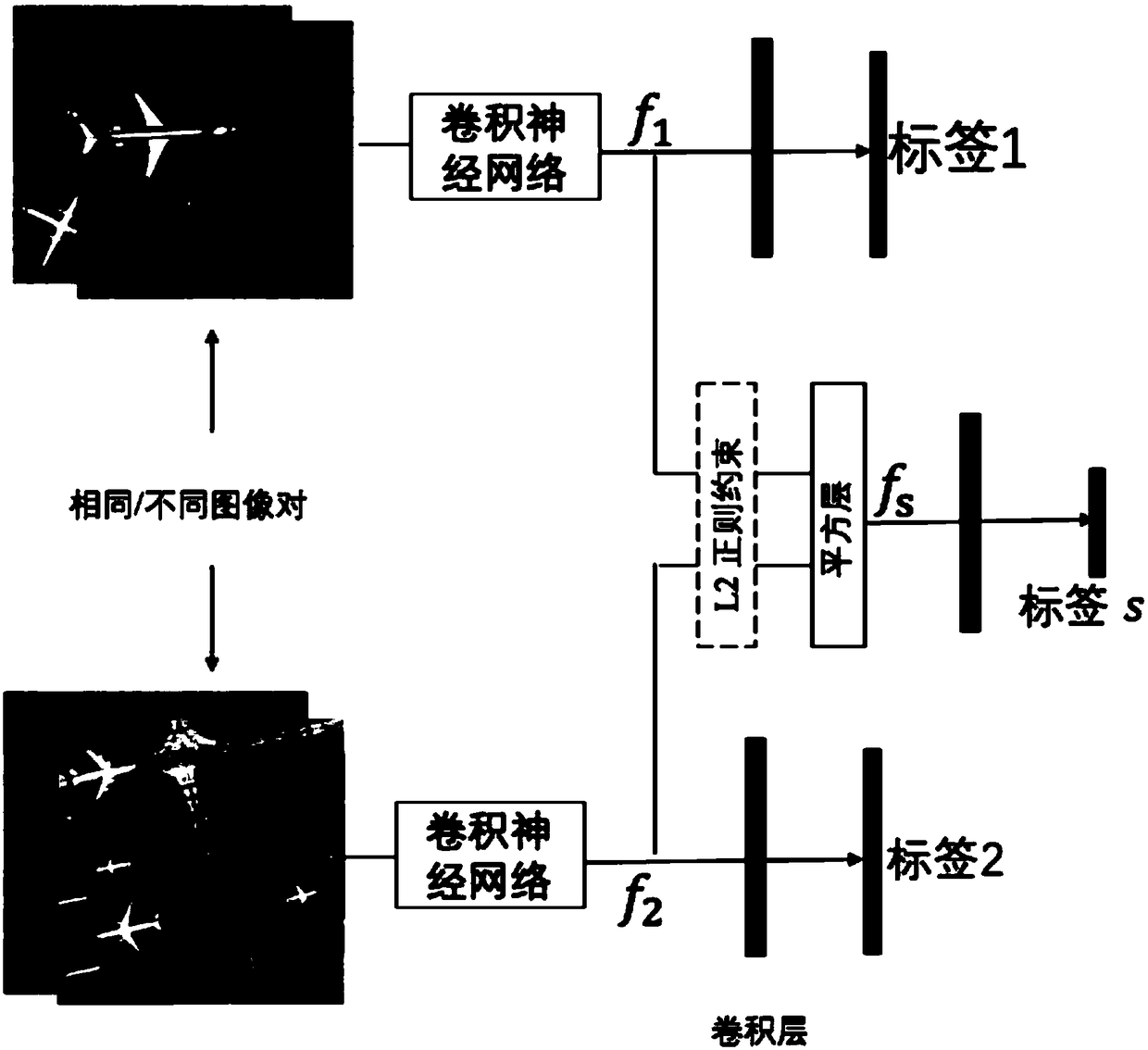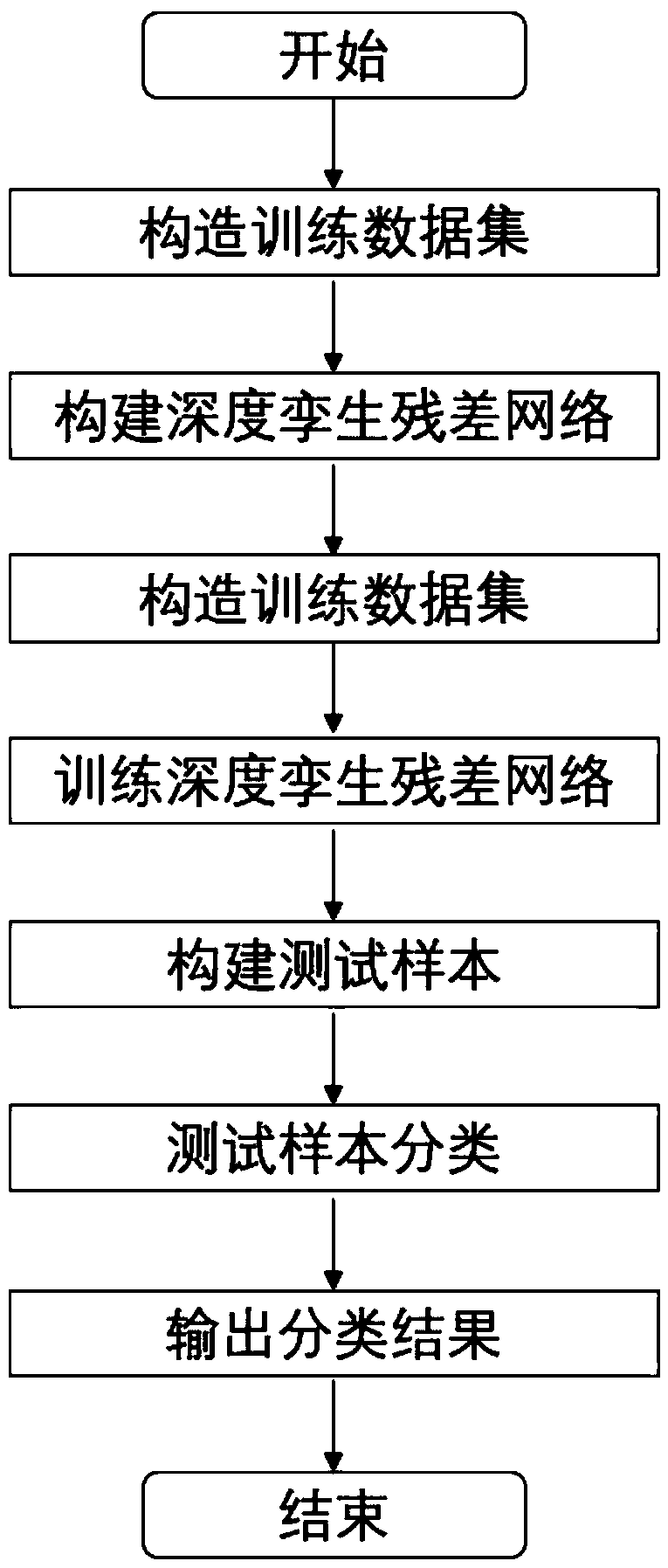Optical remote sensing scene classification method and apparatus based on deep twin residual networks
A classification method, optical remote sensing image technology, applied in scene recognition, instrument, character and pattern recognition, etc., can solve problems such as limited data size, lack of robustness, and lack of data diversity.
- Summary
- Abstract
- Description
- Claims
- Application Information
AI Technical Summary
Problems solved by technology
Method used
Image
Examples
Embodiment Construction
[0077] The technical solution of the present invention will be further described in detail below in conjunction with the accompanying drawings.
[0078] refer to figure 1 , the concrete steps that the present invention realizes are as follows:
[0079] Step S1, constructing a deep twin residual network:
[0080] S1.1. Construct a deep residual network, remove the last two layers in the deep residual network, namely the fully connected layer and the probability layer, add a dropout layer, a convolutional layer and a softmax classification layer, and obtain the first deep residual network;
[0081] S1.2. Using the migration learning strategy, import the network parameters trained with the ImageNet dataset, and use them as the training parameters of the deep residual network;
[0082] Network deep residual network S1.3. Obtain the second deep residual network by copying the structure and parameters of the first deep residual network;
[0083] S1.4. Calculate the square of the ...
PUM
 Login to View More
Login to View More Abstract
Description
Claims
Application Information
 Login to View More
Login to View More - Generate Ideas
- Intellectual Property
- Life Sciences
- Materials
- Tech Scout
- Unparalleled Data Quality
- Higher Quality Content
- 60% Fewer Hallucinations
Browse by: Latest US Patents, China's latest patents, Technical Efficacy Thesaurus, Application Domain, Technology Topic, Popular Technical Reports.
© 2025 PatSnap. All rights reserved.Legal|Privacy policy|Modern Slavery Act Transparency Statement|Sitemap|About US| Contact US: help@patsnap.com



